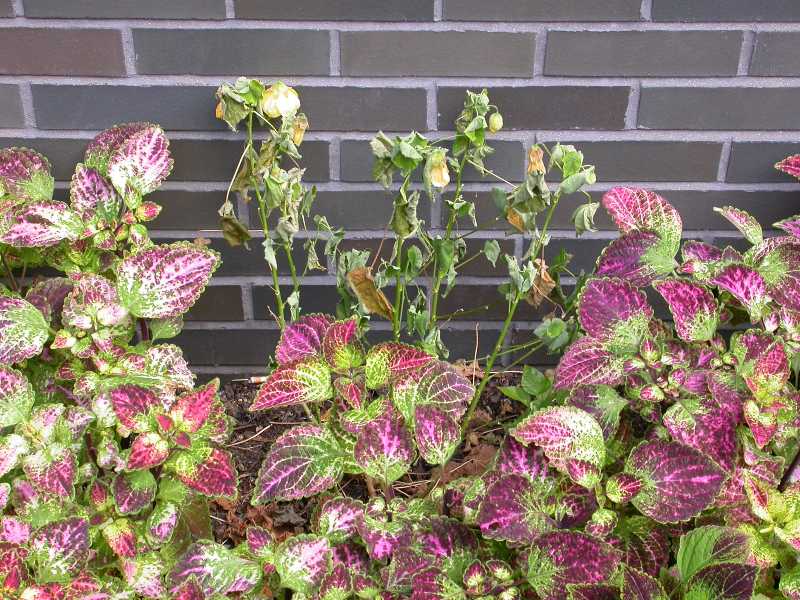 |
Sudden death of flowering maple (Abutilon) |
Newly planted annuals and perennials need careful attention to establish and develop properly. Many factors can result in poor establishment or death. Plants that have failed to establish can often be recognized when you tug on a dead, dying or ailing plant and it comes out of the ground with a root ball much the same as when it was planted having failed to send new roots into the surrounding soil. Here are few of the major points to watch to help your plants become well established after planting.
1. Improper watering. Improper watering is probably the most common reason why a plant dies before it becomes established. Newly planted plants have a small root system, which can dry out very quickly. Be sure and water plants well just after planting and then monitor closely. If the root ball is allowed to dry out the young plant will be severely injured and may never recover. On the other hand, if the root ball is kept too wet, the plant’s roots may rot. Maintaining the correct balance is imperative for the first few weeks to promote healthy root development into the surrounding soil.
2. Plants with small root balls and a lot of foliage can dry out very quickly in hot weather. They may need watering every couple of days when first planted, but the goal should be to extend the time between watering as the plant becomes established. A single severe drying event can kill new transplants! Mulching around young plants can help keep soil moisture more uniform. Keep mulch away from the crown of plants, however, as doing so can encourage crown rots by retaining too much moisture at the base of the plant. Mulch should not touch the crown of the plant.
3. Wrong location. It should be obvious that a plant that needs full sun should not be planted in the shade or vice versa, but still people push the limits. Shade plants grown in too much sun may not establish or just burn up. Sun plants growing in too much shade may lose vigor and eventually die. Plants that need a well-drained soil may also die quickly if planted in wet soils where they are susceptible to root rots.
4. Excess summer heat. Certain plants best adapted to climates with cool summers may not perform well in locations with hot, humid summers. Poor growth, yellowing or bleached foliage, and dieback may all be signs that your plant is suffering from heat stress.
5. Mechanical damage to stems. The stems of young plants can be very vulnerable to damage during planting. Use care when planting so you don't create wounds where fungi or bacteria can enter and rot the crown of the plant.
Organic Strategies
All of the recommended IPM strategies are strictly organic approaches.